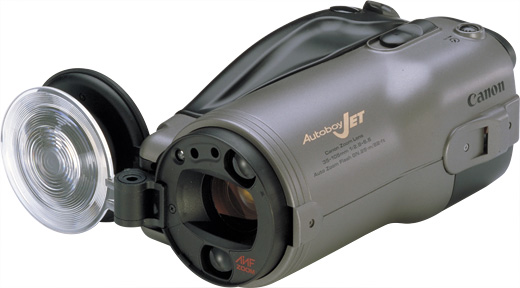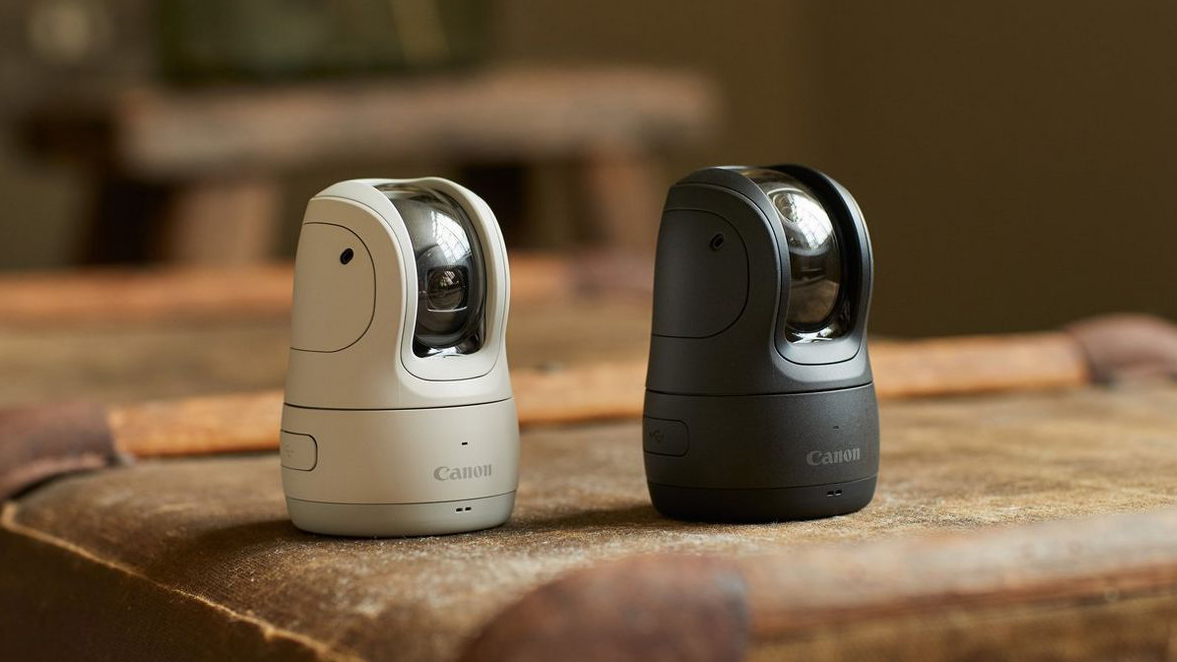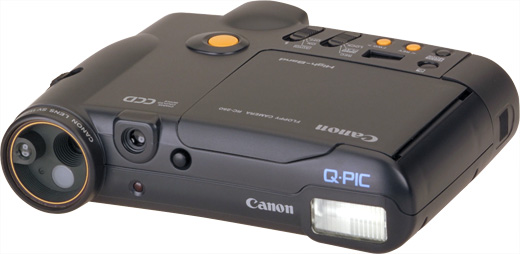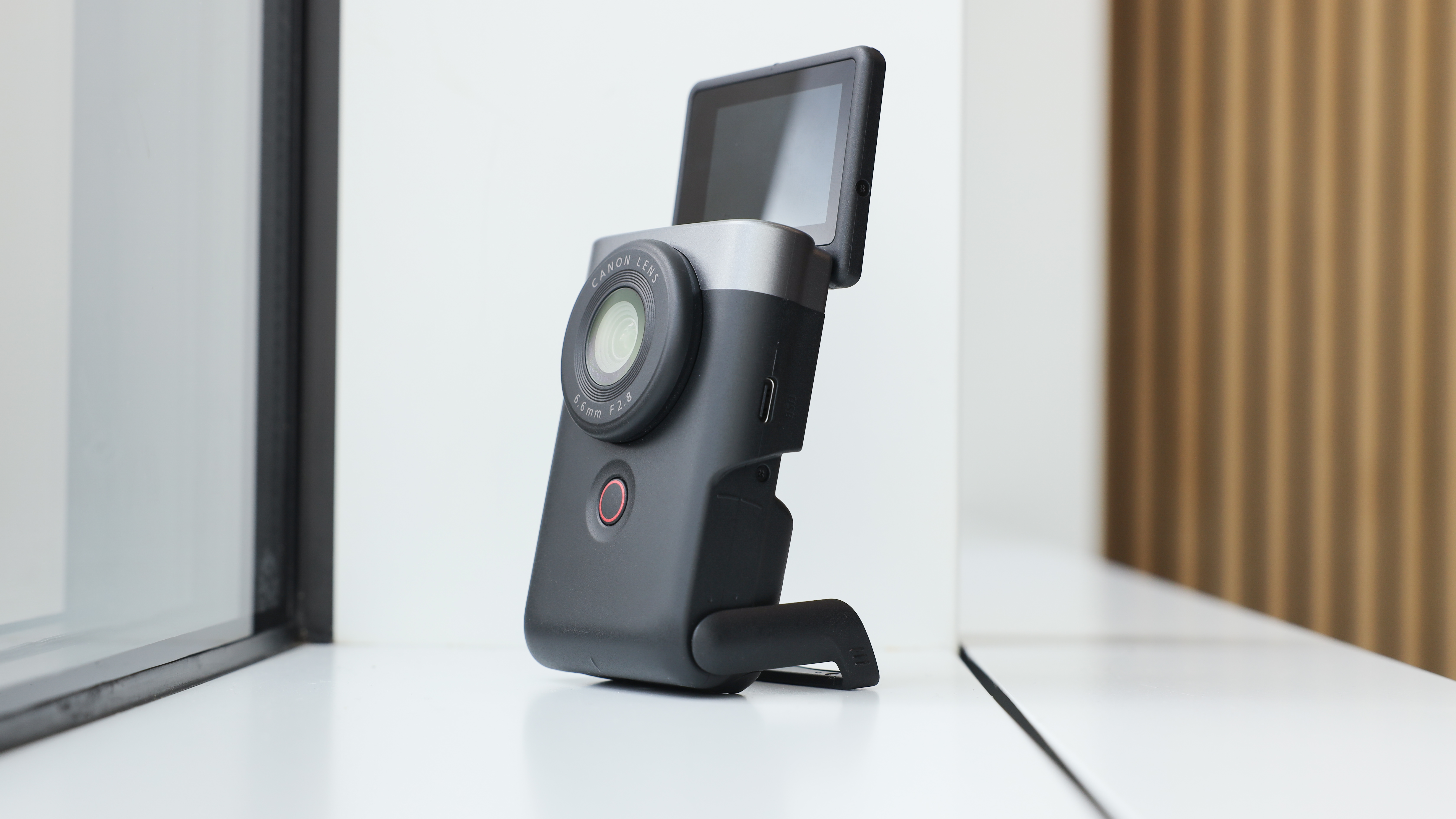Weird or wonderful? We take a look at Canon's more unusual cameras
Love them or hate them, we take a look at some of the more distinctive designs to escape the Canon R&D labs

All the best companies have had their moments of experimentation. Sometimes this works out and catapults a whole new genre of device, and sometimes, it is best left as a footnote of camera history.
You'd think the old adage of "if it ain't broke, don't fix it" seems to apply to the camera industry more than most. After all, the basic design of what a camera is has barely changed for around a hundred years since the end of the twin lens roll film cameras, with SLR-style and rangefinder-style bodies enduring to this day.
• These are the best Canon cameras around right now, some wackier than others!
But how do we progress technology without taking risks? There are monumental shifts more than we think, we just don't think about success in the same way as failure. It was a huge risk to move to digital from film, it was a huge risk to take the mirror out of the DSLR. Even less obvious developments like subject tracking and in-body image stabilization have altered the way we think about photography.
Canon has been in the industry for 85 years, so has had its fair share of unique designs. Never disheartened by its more unusual designs never really taking off, Canon is back again with another more eccentric design – the PowerShot V10, which is sure to divide opinion.
While we try to decide if the Canon PowerShot V10 is inspired or just plain weird, let's take a look back at some of Canon's other unique cameras…
Canon PowerShot Zoom

This monocular camera hybrid device certainly had the potential to be one of the best cameras for wildlife or birdwatching. Unfortunately, the Canon PowerShot Zoom failed to live up to these lofty expectations, with a double whammy of not really being a great camera, or monocular.
Get the Digital Camera World Newsletter
The best camera deals, reviews, product advice, and unmissable photography news, direct to your inbox!
While the idea is sound – a small device that puts a mighty 800mm of focal length in the palm of your hand – the image and video quality were significantly compromised by its uniquely tiny form factor. You can argue that the PowerShot Zoom gives you a perspective that you could otherwise never achieve without carrying around big bulky equipment, and that is true – for the hobbyist. But as a quality photography tool, the PowerShot Zoom just doesn't quite cut it.
And for any keen birders who still like the sound of the PowerShot Zoom, you can adapt some of the best monoculars to work with your smartphone camera, although not quite as convenient as what Canon hoped to offer here.
Canon Ivy Rec

I love a tiny camera, so I do have a soft spot for the little Canon Ivy Rec. This was Canon's attempt at an outdoor action camera with its rugged waterproof construction. Not intended to compete with the serious chops of GoPros, the Ivy Rec was all about fun.
With a carabiner-style clip that would attach to a belt loop or rucksack, the camera was meant to go everywhere, always at hand to capture those fleeting moments. The clip also doubled as a very rudimentary viewfinder. Best of all, the camera was just so small and cute.
However, image quality didn't really surpass what was achievable on the latest phones already in most people's pockets, and with images also being more cumbersome to get onto devices for social sharing, this was another victory for the camera phone. In the end, the Canon Ivy Rec was a relegated as fantastic camera for kids, or for just a bit of fun, but unable to carve out the niche it needed.
Canon Photura (Epoca / Autoboy Jet)

The PowerShot Zoom (above) wasn't Canon's first attempt at the monocular form factor, although the Canon Photura (Epoca in Europe and Autoboy Jet in Japan), is more like the size of a portable telescope.
Released in 1990, the Photura was a 35mm film camera with a 35-105mm power zoom lens controlled by a lever on the side. The camera also had autofocus with three autofocus points which could be used with the direct viewfinder. Not only that the Photoura was capable of macro photography with an attached macro unit, and had a built-in flash.
Despite the decent specs (for the time) its unique design clearly didn't catch on, the camera was also considerably bulky and reportedly quite loud when zooming, unsurprisingly Canon didn't give the Photura a second chance.
Canon PowerShot Pick

The concept of how you are expected to use the Canon PowerShot Pick is stranger than the device itself. The camera, in essence, resembles an indoor security camera, as many of us have from Nest or Ring, and if it was for security purposes, it wouldn't be seen near this list. However, instead of just recording the goings on in your home, the PowerShot Pick instead is tasked with being "your own personal photographer", tracking you and taking snapshots of you that it believes you might want to remember.
I am unsure if I need my own personal paparazzi machine, there is something about subjecting myself to candid images that doesn't appeal. If it does for you, especially as Canon marketing suggests, you might have a young family and frequently require both hands, then this camera does offer a more convenient way to get hands-free images. Although this could also be achieved with admittedly more effort by propping up your phone and using a self-timer or Bluetooth remote.
Canon Ion RC-250

The Canon RC-250 was a still video camera released by Canon in 1986. And although on looks alone, it would fit right at home in a science fiction epic from the 1980s, it was one of the first consumer-level still video cameras available on the market. Still video being a type of photography that captured analog images from a video feed onto a special type of video floppy disk (VF).
Cutting edge for the time, but unthinkable today, the RC-250 had a resolution of 320x240 pixels. It also had a built-in 2-inch color LCD screen. The camera was also rechargeable with about 90 minutes of continuous use.
The proprietary VF format held back the Canon RC-250, disks were relatively expensive, and editing was very limited editing, with images only being able to be edited on a special Canon editing station.
Despite the unconventional design and VF disk limitations, the RC-250 was actually an important stepping stone towards digital photography as we know it today, as it demonstrated the potential of digital imaging and set the stage for the development of more advanced cameras and technologies in the years to come.
Canon PowerShot V10

Canon's latest camera is the PowerShot V10 – a dedicated 4K vlogging camera destined to compete with Sony's ZV range. Where the PowerShot separates itself is in its unique design. Not quite a phone, not quite an action camera, the closest thing on the market is probably the body cameras most frequently seen adorning security uniforms.
The main selling point of the PowerShot V10's design is its unique kickstand that enables the camera to be easily propped up for hands-free filming or live streaming, negating the need for a separate tripod, as well as its small flip screen and the focus on single-handed operation.
The Canon PowerShot V10 offers one of the smallest and most compact specialist vlogging cameras on the market, with a design you won't find anywhere else. It's a design I'm sure will divide opinion, but for those looking to step up from a smartphone for content creation, this might just be your next camera to consider, if you're down with the design.
Find out more about the latest from Canon in our guides to the best Canon camera, and the best Canon lenses. And if you are inspired by Canon's film cameras on this list, check out the best film cameras you can still buy today.

Gareth is a photographer based in London, working as a freelance photographer and videographer for the past several years, having the privilege to shoot for some household names. With work focusing on fashion, portrait and lifestyle content creation, he has developed a range of skills covering everything from editorial shoots to social media videos. Outside of work, he has a personal passion for travel and nature photography, with a devotion to sustainability and environmental causes.
